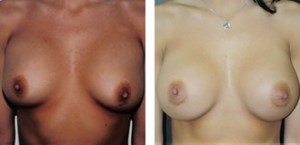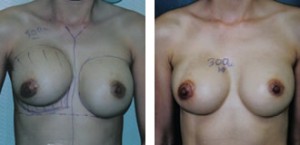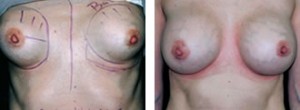Capsular Contracture – Breast Revision in Hollywood
Posted On: November 07, 2008 Author: The Office of Dr. Stuart Linder Posted In: Breast Revision, Home
Patients present with capsular contracture all the time in our practice. These patients are seen from throughout the United States and all over the world. Capsular contracture can be defined as scar tissue. Scar tissue can be thick and painful and when surrounding the breast implant can lead to a deformed appearance to the breast. Scar tissue or capsular contracture, can occur within four weeks after an implantation. It is certainly reduced by placing implants behind the muscle subpectorally. In my practice, I almost always place implants behind the muscle in order to allow for decreased visualization and palpability of the implant edge. The muscle acts also to functionally lubricate the implant and allow the implant to move around in the pocket due to the motion in the muscle and will reduce scar tissue capsular contracture.

Four classes of capsular contracture occur and they are graded as Baker classification.
Baker I capsular contracture reveals no hardening whatsoever. There is no evidence of scar tissue. The breast implant is soft and there is no visible distortion or pain on palpation.
Baker II classification can be associated with palpable contracture.
Baker III is palpable and visible distortion of the pocket with the implant with possible malpositioning.
Baker IV is palpable, visible, hard and painful breast that is often cold in nature with complete disfigurement and pain. Patients with Baker IV capsular contracture usually find their way into the operating room for capsulectomy and capsulotomy surgery.
Treatment of severe Baker IV capsular contracture requires removing scar tissue as well as releasing the scar tissue circumferentially around the pocket.
Experienced Board Certified Plastic Surgeons are the only doctors who should be performing these surgeries. They have the experience and judgment to understand how much tissue to remove, as well as where to release the scar tissue.
Recurrence of capsular contracture is usually anywhere between five and 8 percent with saline implants for after repair of the capsulation.

